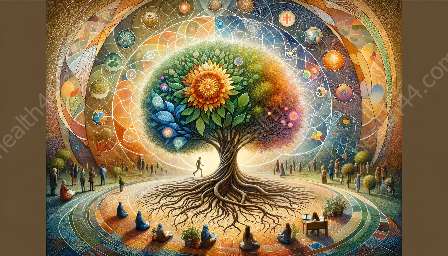The postpartum period is a time of significant physical changes for new mothers as their bodies undergo a process of recovery and adaptation following childbirth. These changes impact not only the mother's immediate well-being but also her long-term reproductive health and the effectiveness of postpartum care and policies. Understanding these changes is crucial for ensuring the well-being of both mothers and their babies.
Hormonal Shifts
One of the primary physical changes during the postpartum period is the fluctuation of hormones in the body. During pregnancy, the levels of hormones such as estrogen and progesterone increase significantly to support the growth and development of the fetus. However, after childbirth, these hormone levels undergo a rapid decline, which can lead to various physical and emotional effects. This hormonal shift plays a crucial role in regulating milk production, uterine contractions, and emotional well-being.
Uterine Involution
Following delivery, the uterus undergoes a process called involution, which refers to the gradual reduction in size as it returns to its pre-pregnancy state. This process is vital for preventing postpartum hemorrhage and promoting overall uterine health. The contraction of uterine muscles helps expel any remaining placental fragments and minimizes the risk of infection, contributing to the mother's postpartum recovery.
Vaginal Changes
The vaginal area also experiences physical changes during the postpartum period. Vaginal soreness, perineal tears, and episiotomy incisions can cause discomfort and affect daily activities. Additionally, the pelvic floor muscles may have weakened due to the stress of labor and delivery, leading to issues such as urinary incontinence. Proper postpartum care and rehabilitation can help address these changes, promoting faster recovery and long-term reproductive health.
Breast Changes
Postpartum breast changes are a significant aspect of the physical transformation experienced by new mothers. As milk production begins, the breasts undergo a process known as engorgement, wherein they become swollen and tender. This is followed by the establishment of milk supply and potential issues such as engorgement, blocked ducts, or mastitis. Proper breastfeeding support and education are vital in managing these changes and ensuring the well-being of both the mother and the baby.
Weight and Body Image
The postpartum period often brings about changes in body weight and shape. Many women may struggle with concerns about their post-pregnancy bodies, leading to potential impacts on their mental and emotional well-being. Understanding and addressing these concerns is essential in providing holistic postpartum care and support for women as they navigate the physical and emotional changes of this period.
Impact on Reproductive Health Policies and Programs
The physical changes during the postpartum period have implications for reproductive health policies and programs. Ensuring access to comprehensive postpartum care, including screenings for postpartum depression, pelvic floor rehabilitation, and breastfeeding support, is essential for addressing the physical and emotional needs of new mothers. Additionally, reproductive health policies should account for the unique challenges and changes women experience during the postpartum period to provide effective and inclusive care for all individuals.
Conclusion
The physical changes during the postpartum period represent a critical phase in a woman's reproductive journey, and understanding these changes is essential for providing effective postpartum care and developing supportive reproductive health policies and programs. By acknowledging and addressing the physical transformations and challenges that new mothers face, healthcare providers and policymakers can play a vital role in promoting the well-being of mothers and their families during this significant life transition.


